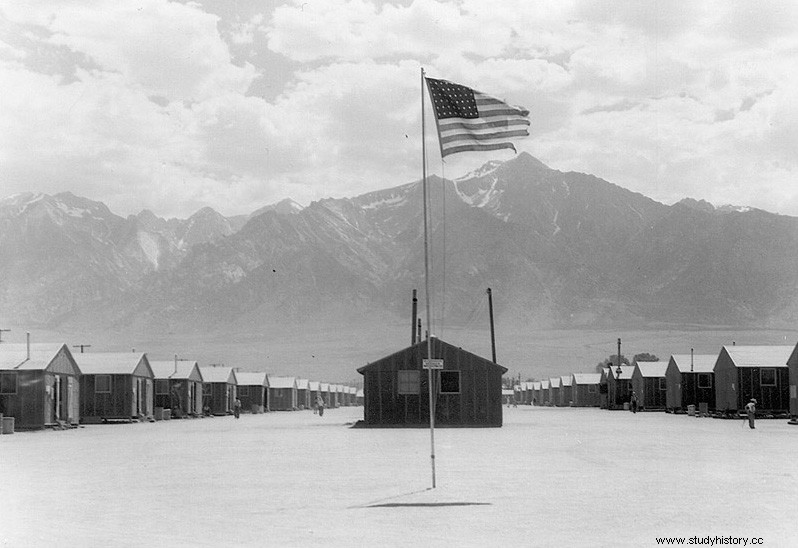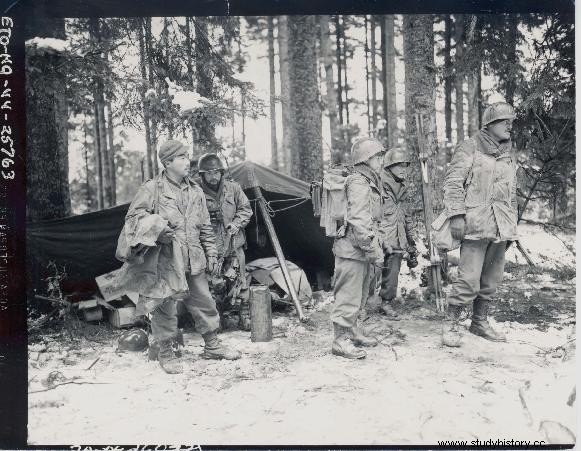Following the attack by the Imperial Japanese Navy on the United States Navy's Pacific Fleet at Pearl Harbor on December 7, 1941, and the subsequent US declaration of war against Japan, the government of Franklin D. Roosevelt decreed the transfer and internment of Japanese residents in the US – including second and third generation, nisei and sansei respectively, with US citizenship – in resettlement camps (speaking in silver, concentration camps ). The suspicion that the attack on Pearl Harbor had been aided by Japanese residents of Hawaii and the fear that citizens of Japanese origin were acting as a fifth column , justified the creation of these fields. In 1942, the War Relocation Authority , the agency responsible for detention and transfer, had built ten camps in seven states and transferred more than 100,000 people to them.

As in Hawaii the citizens of Japanese origin accounted for more than a third of the total population, the internment measure was not as rigorous as on the mainland. Parallel to the internment law, the War Department issued an order to discharge all soldiers of Japanese descent from active duty. Only a few hundred remained in the Hawaii National Guard. This small group was transferred to a camp in Wisconsin and there they had to overcome hundreds of tests, prove their worth and swear to die for the United States. On February 1, 1943, and after justifying its loyalty to the country, the American government revoked the order and allowed US citizens of Japanese origin, second and third generation, to join the Armed Forces. With the veto lifted, many volunteers showed up, especially from Hawaii, and the 442nd Combat Regiment was created. Composed almost entirely of soldiers of Japanese origin. Throughout the war, and attached to the 442nd, 14,000 soldiers of Japanese origin fought against the Germans in Italy, France and Germany.

442nd Regiment
Ironies of life, this Regiment has been the most awarded with distinctions of merit and valor in the entire history of the United States... a total of 18,143. Among them 21 Medals of Honor (the highest US military decoration). In 1988, President Ronald Reagan signed the Civil Liberties Act by which compensation was granted to American citizens of Japanese origin who had been interned during World War II. The law guaranteed each surviving internee a compensation of 20,000 and, in addition, it was recognized that the internment was based on «racial prejudice, war hysteria and lack of political leadership «.

Sources:442nd Regimental Combat Team, Medal of Honor Recipients,
